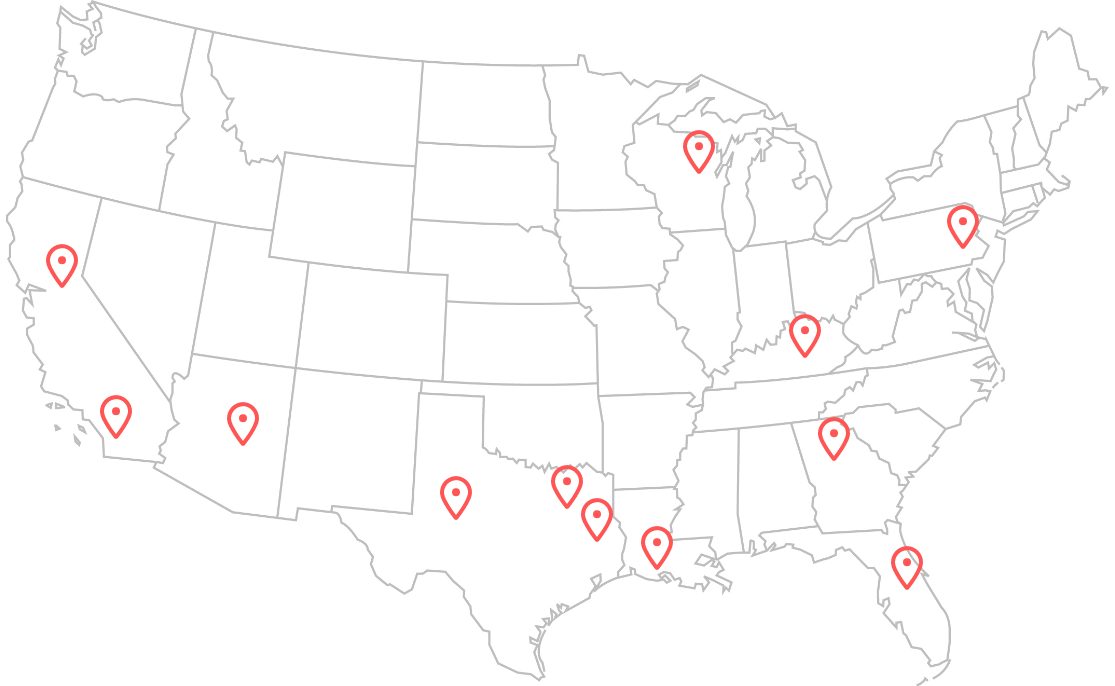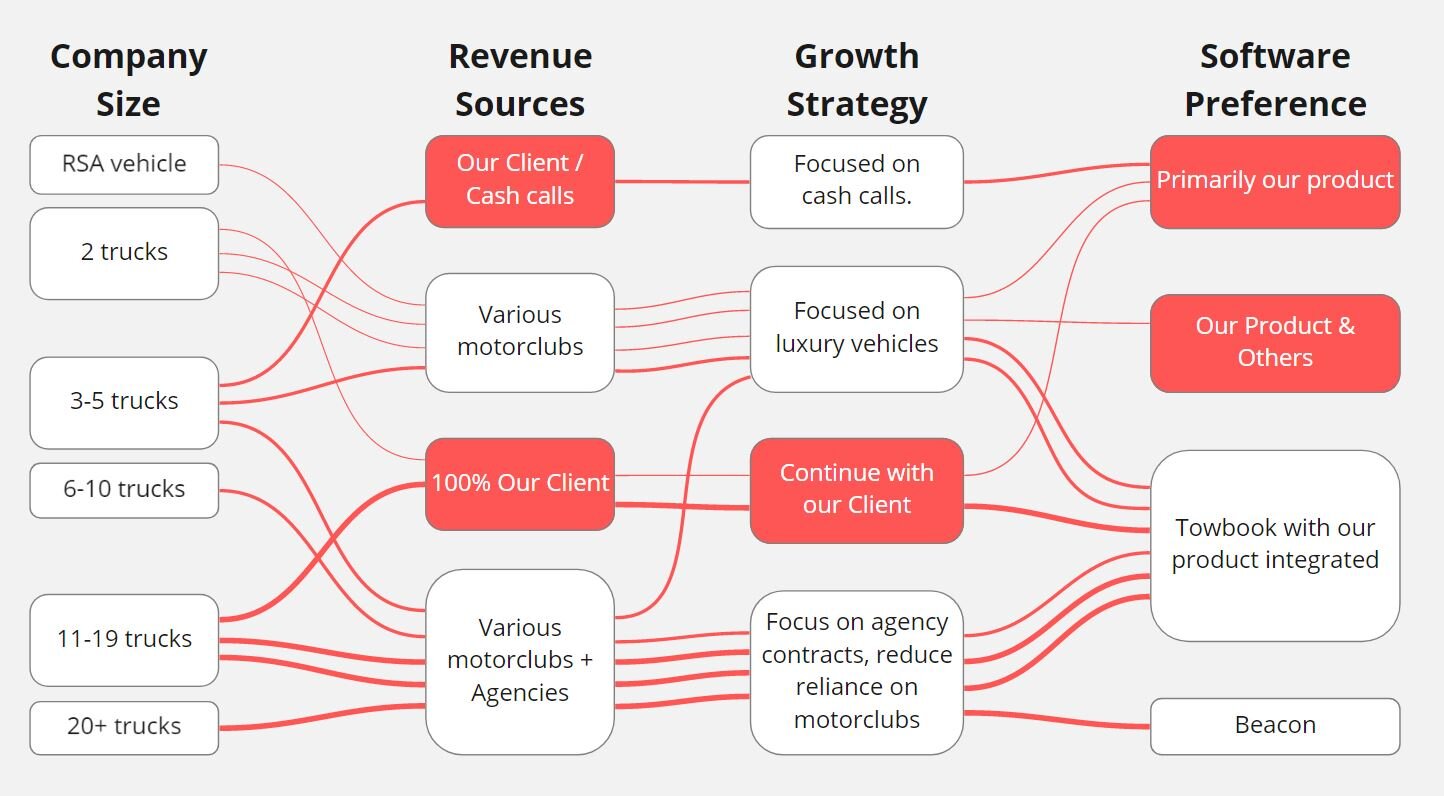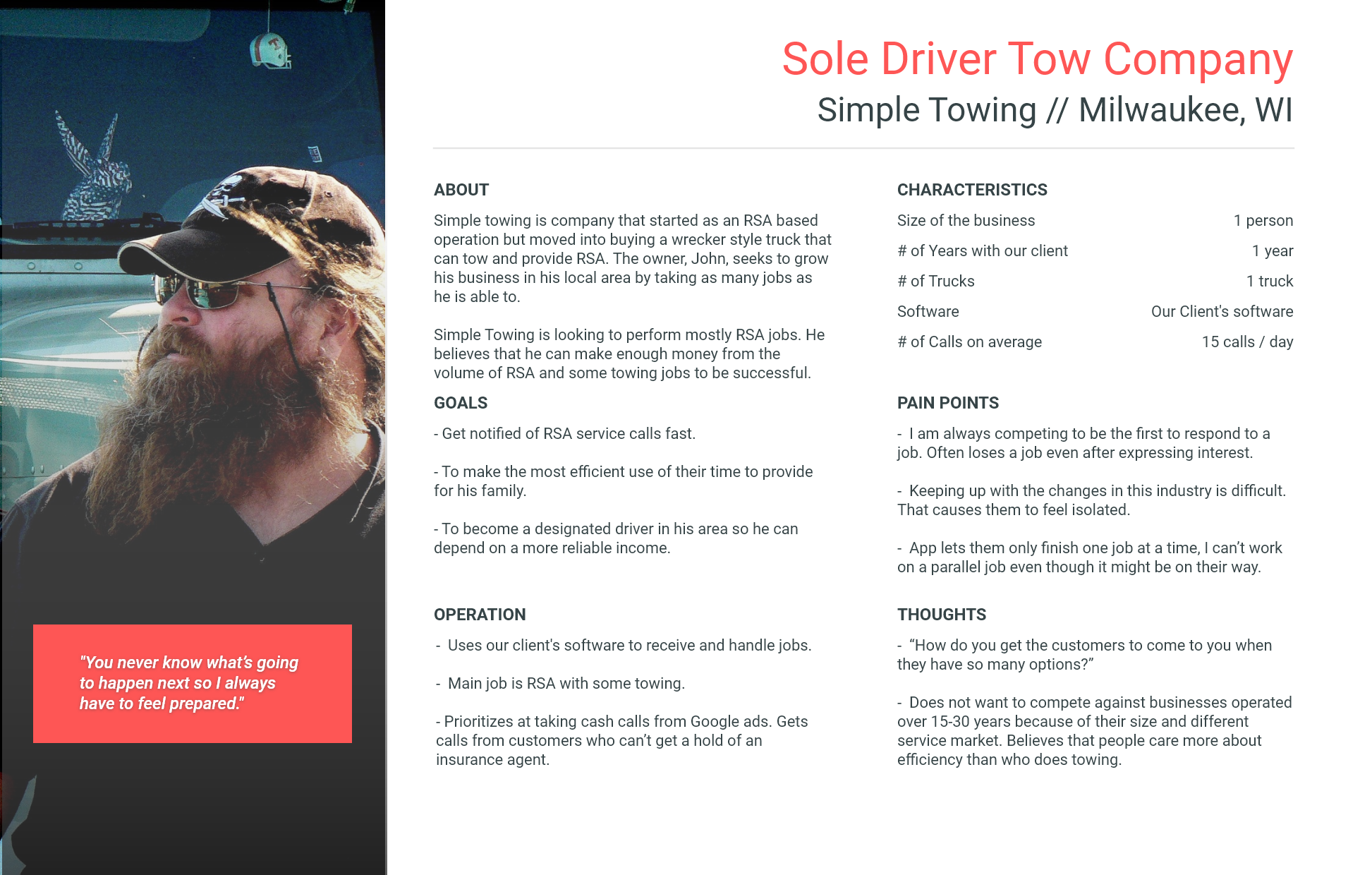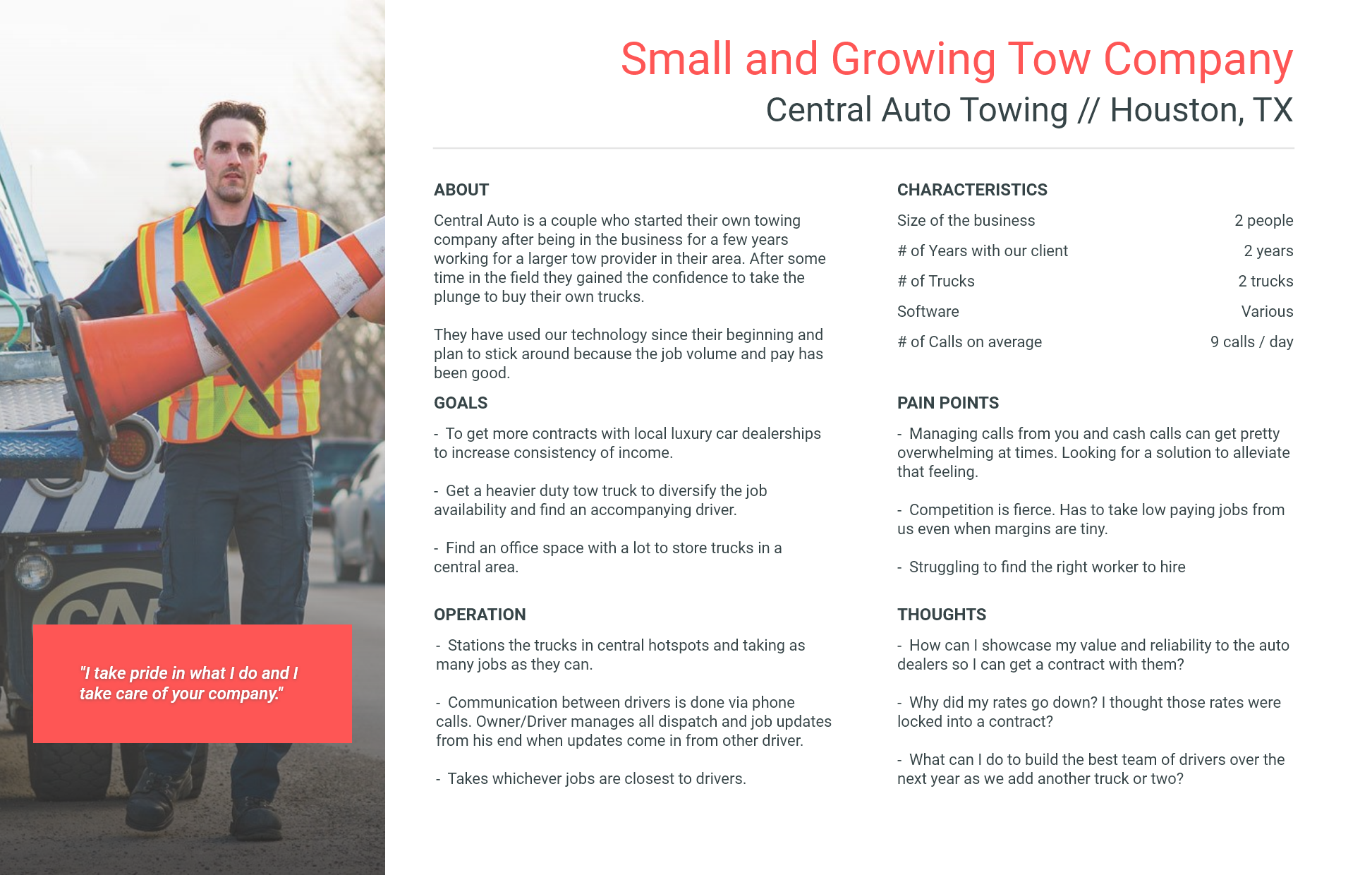MY ROLE
UX Research, User Flows & Stories, Interviewing
TOOLS: Adobe XD, Figma, Miro DURATION: 2 Months
Roadside Assistance research
The Client’s name and branding has been omitted to protect privacy. The client is a technology company providing roadside assistance. They are a global digital platform serving automotive, insurance, and other industries within transportation. They are also powering a network of roadside assistance and towing providers and currently expanding their volume quite rapidly.
The goal of this project was to create personas based on intensive research to help the client understand the people that are using their technology as well as help them build even stronger products going forward.
Who is the client?
The client is a technology company providing roadside assistance. They are a global digital platform serving automotive, insurance, and other industries within transportation. They are also powering a network of roadside assistance and towing providers and currently expanding their volume quite rapidly.
Please note that throughout this study there are some details that have been left out or changed to protective sensitive information.
What the tech
The research team first wanted to understand the current versions of the technology that our client already had out on the market. Their two main technologies are their Web based Dispatching App and the accompanying Mobile Driver app.
Setting the scope
We met with the client’s design team and UX Lead to get an understanding of their main objectives for this round of research. Our goal, as researchers, was to establish the background and scope for the project and get a general idea of what the desired outcome really was.
We learned a few key things from these initial meetings with the company that would help shape our research.
The client’s company has been rapidly growing and expanding their network in the last year.
The client finds that the business and operational needs vary wildly across companies in their network.
The client wants to better understand provider needs and business strategies across various sizes and types of towing/roadside assistance providers.
The client wants well defined personas of different providers on their network as the main outcome.
The client hopes to make future design and business decisions based on the personas we create.
but how does it work?
None of the researchers knew much of anything about towing or roadside assistance or anything in that realm, really. So we had to get a grasp on how it works. In easy to understand, high level terms, it goes like this.
Our objective
From all the conversations we had with our client, we came to the following objective for our research:
To understand the business goals and strategy of small, medium, and large sized service providers with a focus on opportunities for new features. Beyond volume and income, what are their primary business motivations and pain points?
So who did we interview?
Of the 7,500+ providers on their network, we talked to 12 of those providers of varying sizes from all across the US. (4 Small / 4 Medium / 4 Large)
This map is a rough guide to show the locations of the companies we talked to.
Some patterns immerged
After talking with the service providers we were able to map the results and found some really interesting results that are shown here.
Revenue streams and growth plans
Providers we talked to have diverse revenue sources. Many companies get started with motor clubs, cash calls, and or Google ads. Those using only our client’s tech typically started off with the platform taking all the volume they can handle. Companies tend to shift dependence away from motor clubs toward agency contracts or the luxury vehicle market. Those seeking to grow alongside our client are profitable enough to not need alternate revenue.
IN THIER OWN WORDS
“80% of my business is cash calls through Google ads. I avoid motorclubs almost entirely except you, who reached out with a much better offer than anyone else.”
“I don’t know which direction I want to take my company but what I know for sure is I want to go after the money calls. And by that I mean the PD contracts etc. Motorclubs are great but everytime I turn around they’re all about volume and cheap prices.”
“For 2021 I plan to increase new client accounts and decrease roadside dependency. I want to be in a position to negotiate rates so I can actually make a profit.”
provider’s opinions on the first come first serve business model
While the current technology creates advantageous opportunities, providers think it comes with other effects that could potentially damage the provider network that the company spent so much time to build up.
their preferred software
More than half of the providers we talked to as well as about 60% of the client’s active network uses Towbook or other dispatching software.
IN their own words
“Your product lets me finish only one job at a time, can’t work on a multiple jobs at the same time. Even though it might be on my way. I can’t do any parallel jobs.”
“I don’t really use your app. I go strictly through Towbook. We transitioned from your portal to Towbook about a year ago. We used to take calls through your portal but it was too much of a hassle.”
“We pretty much handle everything through Towbook. We do our truck maintenance through there, our dispatching, our accounts, and billing.”
“I am using Towbook because it is what I started with and it gives me all the tools I need to run my business efficiently.”
off to sticky note heaven
Our team consolidated all of our interviewing notes and quotes around a series of common stories through affinity mapping and lots of discussion. From this we compiled all the information into a detailed report and identified 4 personas that showcase the variety we encountered in all of our interviews.
Recognizing common stories
From the compiled information we were able to identify common threads and patterns among the providers.
Business Strategies
Communication Issues
Losing Time & Money
Choosing which jobs to take
Software preferences
Perception of the client’s business model
The outcome of all this was a detailed report of our collective findings and a presentation of the key insights and emerging patterns that we think deserve the most consideration as our client approaches their next steps for research, design decisions, and business expansion.
our ultimate deliverables
These four company personas were designed to represent the variety and specificity of different providers and their journeys as towing and roadside assistance companies.
We hope these personas can help the client consider the following questions when making decisions going forward:
How might we ensure new drivers get enough calls to stay profitable and grow?
How might we remain a profitable resource for providers to ensure they feel supported and appreciated as their business grows?
How might we remain a relevant partner as established companies seeks to diversify their revenue sources?
How might we become relevant to large companies that don’t use or need our services?
The smallest kind of company. They are focused on Roadside Assistance jobs and a little bit of Towing.
The small and growing company is focused on getting established in the field and expanding their services.
The Mid sized company is looking to stream line their processes and move away from motor club style jobs.
The Large towing company no longer needs our client’s tech to stay profitable but our client wants to keep these loyal providers on their network.
Opportunities for our client
The value of provider loyalty to our client.
Our client has built up a strong network of providers through hard-won, intentional relationships, and has provided opportunities for new and growing businesses to get a foothold in the industry. Their provider network is one of its greatest advantages, but as the company grows rapidly there is a struggle to support each provider like they did before the rapid expansion.
“We want to focus our company toward our clientele that take care of us. You guys have been good to us, you guys have been decent.”
“Dealing with the field reps, dealing with the management, is easy, they’re nice people, You don’t feel as if you mess up they’re going to kick you out. With other motor clubs you feel a threat.”
As a growing technology company, it’s a question what share of our client's value comes from its digital solutions versus its network of providers and all the personal human relationships that glue it together. How can our client best support it’s provider network across all four of its key personas?
So what could come next for our client…
From this research we identified three key areas of opportunity for improvement that talk on the bigger picture and lend toward areas of future research.
Call Center Bottleneck.
How might we reduce the need for providers to call in to the call centers to get correct information, adjust payments, or change something about the job?
Changing payment rates once providers are “contracted” in.
How might we safeguard against undercutting its own providers while seeking to become more profitable?
Provider Loyalty.
How might we remain relevant and loyal to providers who seek to reduce their dependence on our products?
An area for personal reflection on this project
This project was an unbelievable opportunity for me to gain experience working with other UX researchers as well as a design team. Before this project was I was super gung-ho on focusing in on visual design and was kinda bummed when I found out this project was research based. But after getting to know my team, establishing an objective and really getting my feet wet in the research, I really found a love of user research, interviewing, and parsing all the data in sticky note heaven.
I learned a lot about story telling, active listening, and research methodology from my fellow researchers and the designers we got to talk with from this company. This project led to invaluable connections for me and I am really stoked on the outcome. Having direct contact with the company’s UX Lead throughout the entire project was really something that I hope Seeing the research my team did get implemented into the future of this company’s products will be a great start to my UX career.
Thanks for taking the time to read this case study. I appreciate your time. Stay rad out there!








